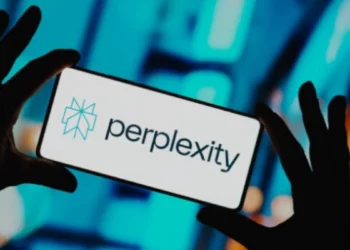On June 13, 2024, Luma AI, an artificial intelligence (AI) development startup unveiled its latest video generator, Dream Machine. Dream Machine is a text-to-video generator that creates AI-generated videos from simple text prompts.
The concept is not novel. In fact, there are similar tools in the market, such as OpenAI’s Sora AI, that have set the bar of AI video generation high.
While OpenAI’s Sora has already established itself as a prominent text-to-video generator, Luma AI’s Dream Machine is set to shake up the field with its features and availability.
Let’s learn a little bit more about the newest AI video generator in the market.
What Is OpenAI Sora? How To Use It?
What is Luma AI’s Dream Machine?
Luma AI’s Dream Machine is a text-to-video generator. It uses advanced AI techniques to convert simple text prompts into intricate and dynamic videos. Dream Machine has been created with a focus on being user-friendly and easy to use so that everyone can enjoy making videos.
It does not need any prior AI proficiency or video editing.
All users have to do is a provide a text prompt and let Dream Machine will create a short video based on the prompt.
How to Access and Use Open AI Sora? All Key Features are explained here.
How to Use Dream Machine?
Let’s explore the step-by-step process of creating videos using Dream Machine:
- Visit the official website
The first obvious step is to visit the official website of Luma AI.
- Sign up
If you have an existing account, then log in using your credentials. But if you are new, then sign up using your Google account.
- Type in your prompt
After signing up, you will find a text box, asking you to input your prompt. Keep your prompt as detailed as you can, you can even choose the type of art you want. Altenatively, you can provide an image and ask Dream Machine to generate a video from it.
- Enhance your video (optional)
Luma AI also provides you with an option to enhance your videos. You can tick the checkbox below the text box, if you want your videos enhanced.
- Generate
All that is left to do now is wait for the tool to generate your video. After your video is generated, you can save or download it on your device, if it is to your liking. If is not up to your standards, you can give it a try again.
OpenAI Sora vs Kling AI: Comparing the Differences Between AI Video Generators
Dream Machine vs Sora
Now, that we have an understanding of what Luma AI’s Dream Machine is and how to use it, let’s compare it to OpenAI’s Sora AI.
We have covered Sora in detail here.
We took a prompt when Sora was released and used it to generate a video using Dream Machine. The results that we got from the two video generators vary strikingly, despite using the same prompt. You can judge for yourself.
PROMPT USED
A gorgeously rendered papercraft world of a coral reef, rife with colorful fish and sea creatures.
Sora’s Video
P.S.: We had to compress the video generated by Sora. The actual video quality is better.
Dream Machine’s Video
P.S.: We had to compress Dream Machine’s video as well. The actual video quality is better.
Haiper AI Text to Video Generation: How to Use? Is it better than OpenAI Sora?
Accessibility and Availability
- Dream Machine:
- Open to the general public for free.
- Encourages a wide range of experimentation and community involvement.
- Sora:
- Limited access to a select group of partners.
- Not available to the public, restricting experimentation and community feedback.
User Experience and Ease of Use
- Dream Machine:
- Users can generate realistic five-second video clips in approximately two minutes.
- Utilizes simple text descriptions for video generation.
- Incorporates an enhancement option to improve the quality of the generated video.
- Sora:
- Generates videos with a more refined and reliable performance.
- Produces high-quality videos that capture intricate details and vibrant atmospheres.
- Limited user control, focusing mainly on text prompts without additional granular adjustments.
Video Quality and Realism
- Dream Machine:
- Known for capturing motion better than other models.
- Generates photo-realistic videos, suitable for specific use cases where realism is crucial.
- Early tests showed issues with blending and warping, especially around complex scenes and movements.
- Struggles with producing intricate details and depth compared to Sora.
- Sora:
- Produces videos with remarkable precision and dynamic, realistic animations.
- Known for “dreamy” and film-quality output, creating visually stunning and coherent videos.
- Demonstrates superior performance in capturing complex and detailed prompts.
Use Cases and Applications
- Dream Machine:
- Suitable for quick visualization of ideas and producing short, high-quality video content.
- Ideal for creators looking for a tool to generate realistic videos rapidly.
- May find applications in advertising, social media content, and educational materials.
- Sora:
- Best suited for high-quality film production, detailed animations, and complex video projects.
- Its superior detail and quality make it ideal for professional filmmakers and content creators requiring high-fidelity outputs.
- To be used in scenarios where precision and visual appeal are paramount.
Here is an abridged comparison of Dream Machine and Sora.
| Feature | Dream Machine | Sora |
| Accessibility | Open to the public for free | Limited to select partners |
| Video Quality | Photo-realistic; good motion capture; some warping | High precision and coherence; film quality |
| Time | Approximately 2 minutes per clip | Faster and more efficient |
| Video Length | Limited to 5 seconds | Varies, but up to a minute |
| Tech Foundation | Transformer diffusion technology | Advanced AI models with minimal control required |
The Bottom Line
While Dream Machine has a user-friendly interface and is free and publicly available, OpenAI’s Sora takes the top spot in generating high-quality, detailed, and dynamic videos. Despite their many differences, both Dream Machine and Sora are excellent AI video generation tools.
Alibaba EMO Vs OpenAI Sora: Which is Better AI Video Generator?


















